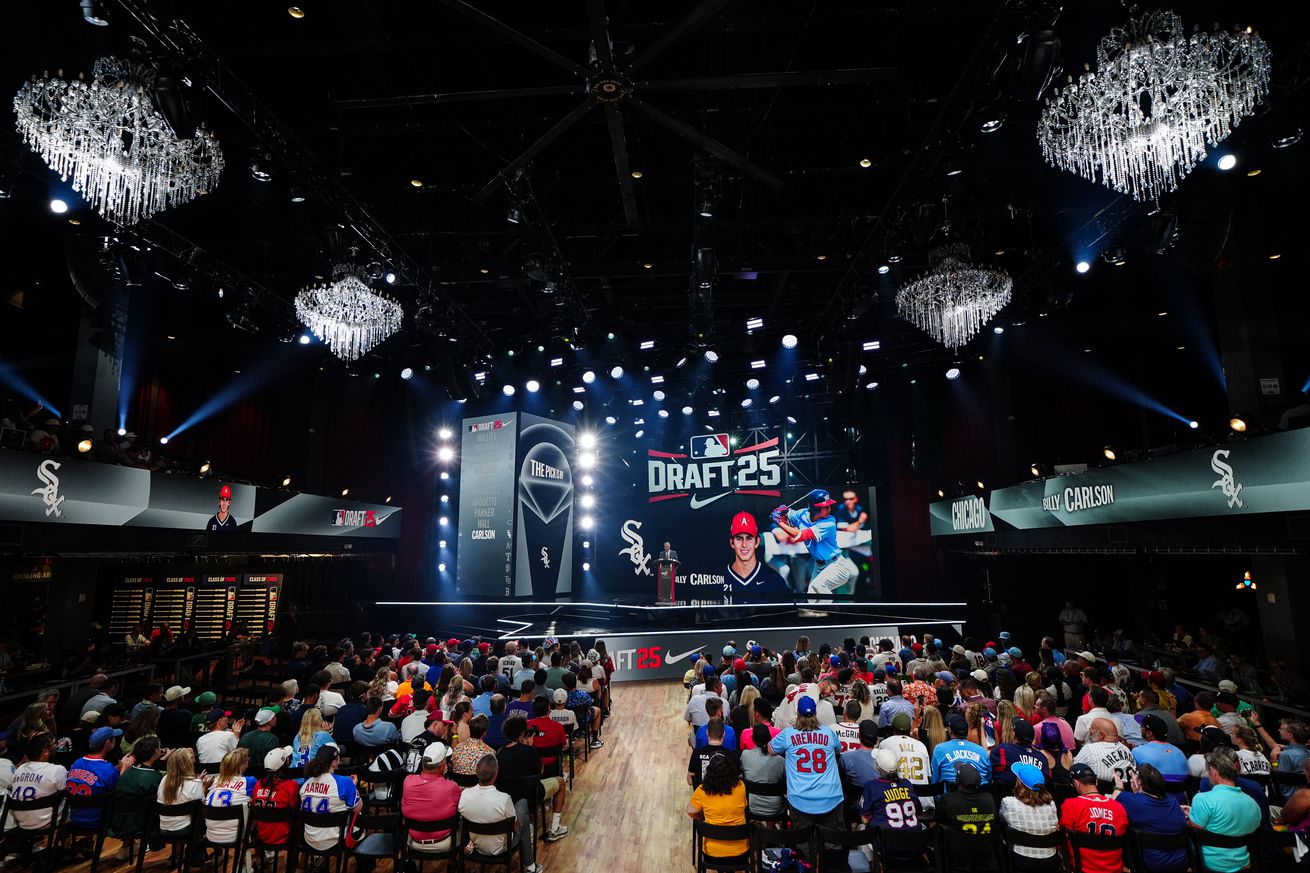
Your go-to spot to keep up with signings, bonus amounts and UDFAs!
The 2025 MLB Draft is over, and the White Sox went hard at bats, both prep and college, with their money picks in Rounds 1-10. If you were a shortstop and draft-eligible, the White Sox had you in their sights. Of course, the organization is weaker in talent than the prospect rankers would have you belief, and that is especially true on the position player side of things.
This year’s signing deadline is July 28, although the White Sox are expected to ink all 20 of their picks. As you are probably aware, each pick in the draft is assigned a specific and unique value, and the sum of those values is the amount a team is allowed to spend on their draft selections.
For the first 10 rounds of the draft, every dollar spent counts against that total (the bonus pool). All picks after the 10th Round are assigned $150,000 as the signing bonus; players can be (and often are) signed for more or less than that — but anything more than $150,00 counts against the bonus pool.
HOWEVER, teams are allowed to overspend their bonus pool by up to 5%. If a team spends more than 105% of their bonus pool, stiff penalties are introduced: the loss of future draft picks. For this reason, under these rules no MLB team has ever exceeded that 5% overage.
There are various strategies employed to maximize pick value, which often ends up on the backs of college seniors with no leverage (i.e. cannot refuse to sign/return to school); the White Sox in fact have paid signing bonuses as little as $10,000 or perhaps $5,000 under such circumstances. The unused money is then poured into enticing one of the “money picks” (Nos. 1-10, but more likely Top 5) to sign. Or, as was the case with George Wolkow in 2023 or DJ Gladney in 2019, a “steal” in the lower 10s of the draft will have such savings thrown at him to ensure signing/eschewing a college scholarship commitment.
The White Sox might find themselves in a slight Wolkow-Gladney situation with 13th Round pick Rylan Galvan, a highly-rated talent expected to go in the fifth or sixth round this year. But otherwise, the club should not have to extend itself too desperately to ink players drafted in the 11th to 20th rounds
If a player doesn’t sign with the White Sox, the money slotted for their pick is lost; it cannot be used to sign other players in the draft class. The White Sox would, however, get a compensation pick one slot lower. That is, if the White Sox failed to sign Billy Carlson, they would get the No. 11 pick in the 2026 draft. If a pick lower than the first two rounds doesn’t sign, the White Sox get a compensatory pick the next year at the end of the round; if third-rounder Kyle Lodise doesn’t come to terms, the White Sox will get an extra pick at the end of 2026’s third round.
Update: One big draft pick domino has fallen, with the imminent (or close) signing of second-rounder Jaden Fauske. It took $766,400 extra to sign him (over-slot), but one of the trickier pieces of the financial puzzle seems now to be in place.
